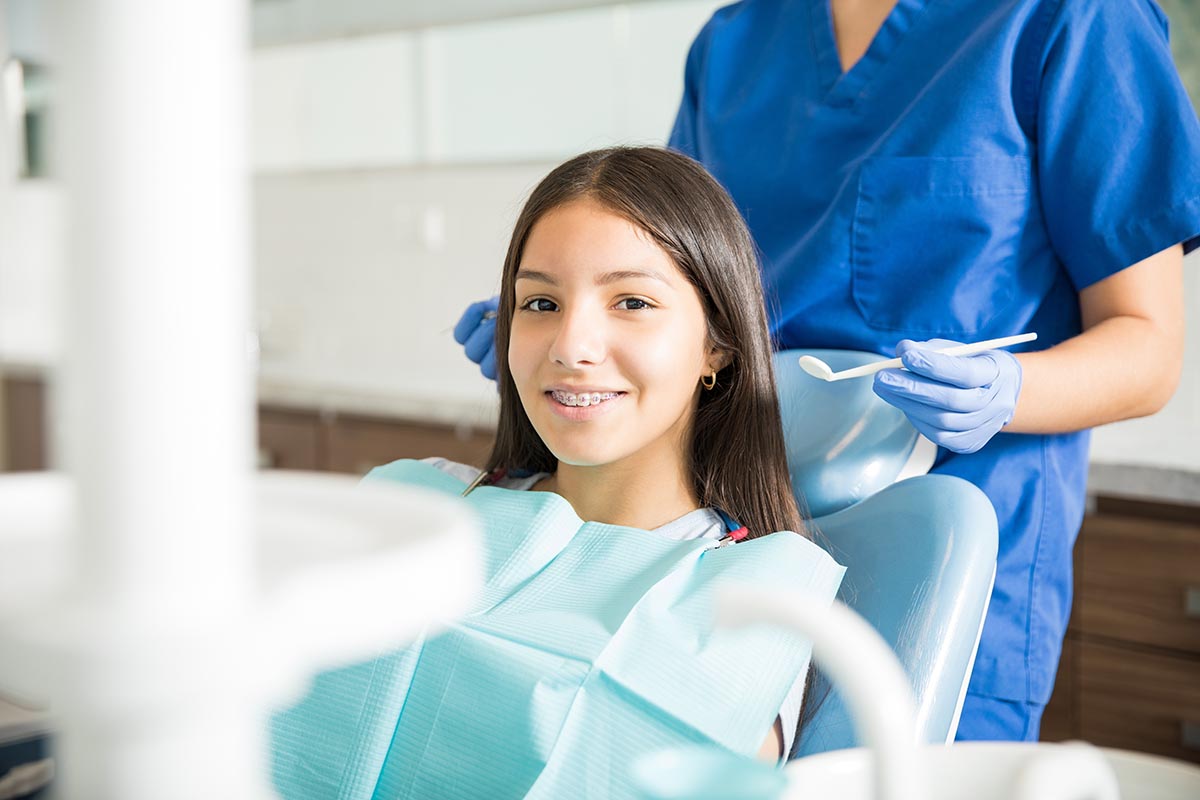Parents want their kids to have healthy teeth. But they don’t want them to experience pain or be subjected to invasive procedures. That’s where ozone treatment comes in – a safe and effective treatment option that can benefit pediatric dentistry in many ways.
What is Ozone Treatment Therapy?
Ozone treatment involves using medical-grade ozone gas to treat various dental conditions, including cavities, gum disease, and even root canal infections. When used in low concentrations, Ozone gas has potent anti-inflammatory effects that help eliminate bacteria within the tooth structure.
Understanding Ozone Treatment
Ozone is made up of three molecules of oxygen (O3). It can be created artificially by applying an electrical charge to medical-grade oxygen. Once the charge interacts with the oxygen molecules, they bond together, creating ozone gas which can be used in various therapies.
The most common form of ozone therapy involves introducing this gas into a patient’s body through different means depending on their condition. Some people receive injections, while others may inhale a mixture containing ozone (which has been safely diluted first).
Challenges in Dealing with Children
Regarding pediatric dentistry, several challenges can hinder the dentist’s efficiency. From communication problems with young children to complex dental procedures requiring intricate hand movements, there is never a dull moment in this field.
Fear and Anxiety
One of the biggest challenges pediatric dentists face is dealing with children who are afraid or anxious about visiting the dentist. Fear can stem from various reasons like pain during procedures, fear of the unknown, or previous negative experiences. This can make it difficult for dentists to properly examine and treat the child’s teeth.
Communication Obstacles: Speaking the Same Language as Children
Another significant hurdle in pediatric dentistry is communicating effectively with kids. Unlike adults who are accustomed to technical terms about teeth or complicated medical language, children require a fundamentally different approach. For instance, when discussing oral hygiene practices with kids aged 3-5 years old, words like “gingivitis,” “halitosis,” “plaque,” or “periodontal disease” won’t resonate well with them.
Behavior Management
Young patients require special attention when it comes to behavior management during appointments. Every patient has a different personality, making it hard for Pediatricians always to predict how they will behave- making each appointment unique and hence requiring dynamic behavioral techniques. The working environment also plays a crucial role in shaping child behavior.
Oftentimes, lack of cooperation leads to lengthened visits which may result in frustration for both parties involved- parents included.
Children’s Teeth are Delicate
It’s no secret that kids’ teeth endure a fair share of trauma that causes cavities, cracks or chips. These often leave some dental severe work required from complex fillings to caps and crowns – daunting tasks even for adults!
Given that the tools aimed towards their small-sized mouths require exceptional precision throughout, one false move could end up causing a world of discomfort. Ozone treatment can help with this problem.
Advantages of Ozone Treatment in Pediatric Dentistry
Pain-Free Treatment
One significant advantage of using ozone treatment for pediatric dentistry is that it’s practically pain-free. Many children and adults alike fear going to the dentist and experiencing pain from treatments like drilling and filling cavities. ozone treatment
However, with ozone treatment, there’s no need for anesthesia since there’s little-to-no discomfort involved during or after the procedure. This means less stress and anxiety for both parents and kids.
Non-Invasive Procedure
Another benefit of using ozone therapy is its non-invasive nature. With traditional methods like fillings or removals requiring invasive surgery or drilling into sensitive teeth layers, opting to maintain good tooth health through ozone treatment becomes easy.
Effective Bacterial Elimination
Bacteria thrive on sugar. And it’s no secret that children love candy and other sweets. Unfortunately, these sugary treats can lead to cavities if proper oral care is not maintained.
Ozone treatments work wonders against bacteria buildup in teeth, allowing you to fight decay from an early stage while maintaining tooth vitality with no need for fillings.
Faster Healing Times
Ozone treatment stimulates natural healing processes faster than traditional treatments. This means less downtime or discomfort for kids since their bodies are better equipped to heal quickly.
Cost-Effective
In addition, ozone therapy offers a cost-effective alternative due to requiring less equipment and resources than traditional methods like surgical removals and filling, which damage permanent teeth, leading to sensitivity issues.
Applications of ozone treatment in pediatric dentistry
Ozone therapy has numerous applications in pediatric dentistry beyond just treating caries:
Control of caries
Caries or cavities are one of the most common dental problems children face. Traditional drilling, filling, or extraction methods can be painful and traumatic for young patients.
Ozone treatment offers a painless and drill-free option for controlling caries. Applying high-concentration ozone gas can remove decay from teeth without causing any discomfort to the child.
Disinfection
Maintaining proper hygiene is crucial in any healthcare setting, especially when dealing with children more susceptible to infections. Ozone treatment can disinfect surfaces, equipment, and even air within dental clinics, ensuring a safe environment free from harmful bacteria.
Gingivitis
Gingivitis or inflamed gums can cause discomfort and affect oral health if left untreated. Typically, gingivitis requires scaling and root planing procedures that may require anesthesia for children.
Ozone therapy comes to play here as ozonated water sprays directly on gum tissues without requiring any needles, providing an easy solution for both parents and children.
Root Canal Therapy
Root canal therapy involves the removal of infected pulp within a tooth’s roots. This procedure is often required by older children which is painful. But now with the increased use of ozone treatments, it becomes much more bearable, thus turning this complex procedure into a relatively less invasive one – cause considering it all needs precision work!
Dental Implants Placement Surgery
Dental implant placement surgery is now standard therapy. Ozone treatment helps to disinfect the implant sites and ensure healthy and speedy healing. It also causes a deficiency of reactive oxygen in the area, thus promoting progenitor cell growth.
Saliva Stimulation
Diminishing saliva production in children can lead to tooth decay. Using ozonated water can improve the quality and quantity of salivation by fighting teeth-destroying bacteria.
Factors to Consider Before Opting For Ozone Treatment
- Age: While there are no specific age limits on ozone therapy, younger children with underdeveloped teeth may respond differently than older children or adults. For instance, some studies suggest that ozone can interfere with the formation of tooth enamel if used in too high concentrations or too frequently on primary teeth.
- Condition: Ozone therapy may not suit all dental needs or situations. For example, if your child has extensive decay, abscesses, or infections that have spread beyond the tooth’s pulp or root canal area, ozone treatment alone may not be sufficient to treat them. Your dentist may recommend combining ozone therapy with other procedures, such as fillings, crowns, or extractions.
- Allergies and sensitivities: Some children may be allergic or sensitive to ozone gas, its byproducts (such as peroxides), or other materials used in conjunction with it (such as silver diamine fluoride). Therefore, informing your dentist of any known allergies or previous adverse reactions before undergoing ozone treatment is essential.
- Cost and availability: Not all dental practices offer ozone therapy as a standard service option yet, and insurance plans may not cover it entirely as an approved method of treatment. Therefore, you must research options near you and carefully compare costs and benefits.
Why Choosing the Right Dentist for Ozone Treatment in Pediatric Dentistry is Essential
When caring for your child’s oral health, finding the right dentist for ozone treatment can make all the difference in their overall experience. Whether your child needs a routine checkup or specialized dental procedures, selecting a competent and caring pediatric dentist can help ensure that they receive proper treatment and attention from someone who understands their unique needs.
Selecting an Experienced Pediatric Dentist
Choosing an experienced pediatric dentist specializing in ozone treatment is crucial because children have different teeth than adults. Their teeth are developing and growing at different rates requiring specific tailor-made approaches when providing safe treatment modalities such as ozone treatments – which aim to prevent tooth decay by removing harmful bacteria while preserving healthy tissue.
An experienced pediatric dentist also undergoes additional training on behavior management techniques designed to improve children’s cooperation levels during treatment processes minimizing discomfort, thereby maximizing positive experiences.
Furthermore, credible and reliable dentists will use advanced technology to treat your child’s teeth with safety measures that eliminate exposure to unnecessary radiation. This includes methods like digital X-rays, which drastically reduce radiation exposure compared to standard X-rays, and less-invasive procedures like laser cavity detection systems or air abrasion tools that preserve healthy tooth structure while treating problem areas effectively.
Finding a Caring Environment that Prioritizes Comfort
Aside from practical considerations regarding education and expertise and updated technological equipment – it would help if you looked for a warm environment where your child can feel at ease.
A relaxed, compassionate, and child-friendly environment will foster proper communication between your kids and the dentist, which helps in easing any anxiety and builds a lasting child-dentist relationship.
In summary, finding a highly competent pediatric dentist specializing in ozone treatments is vital for maintaining optimal oral health care while ensuring children receive appropriate dental treatment correctly.




















